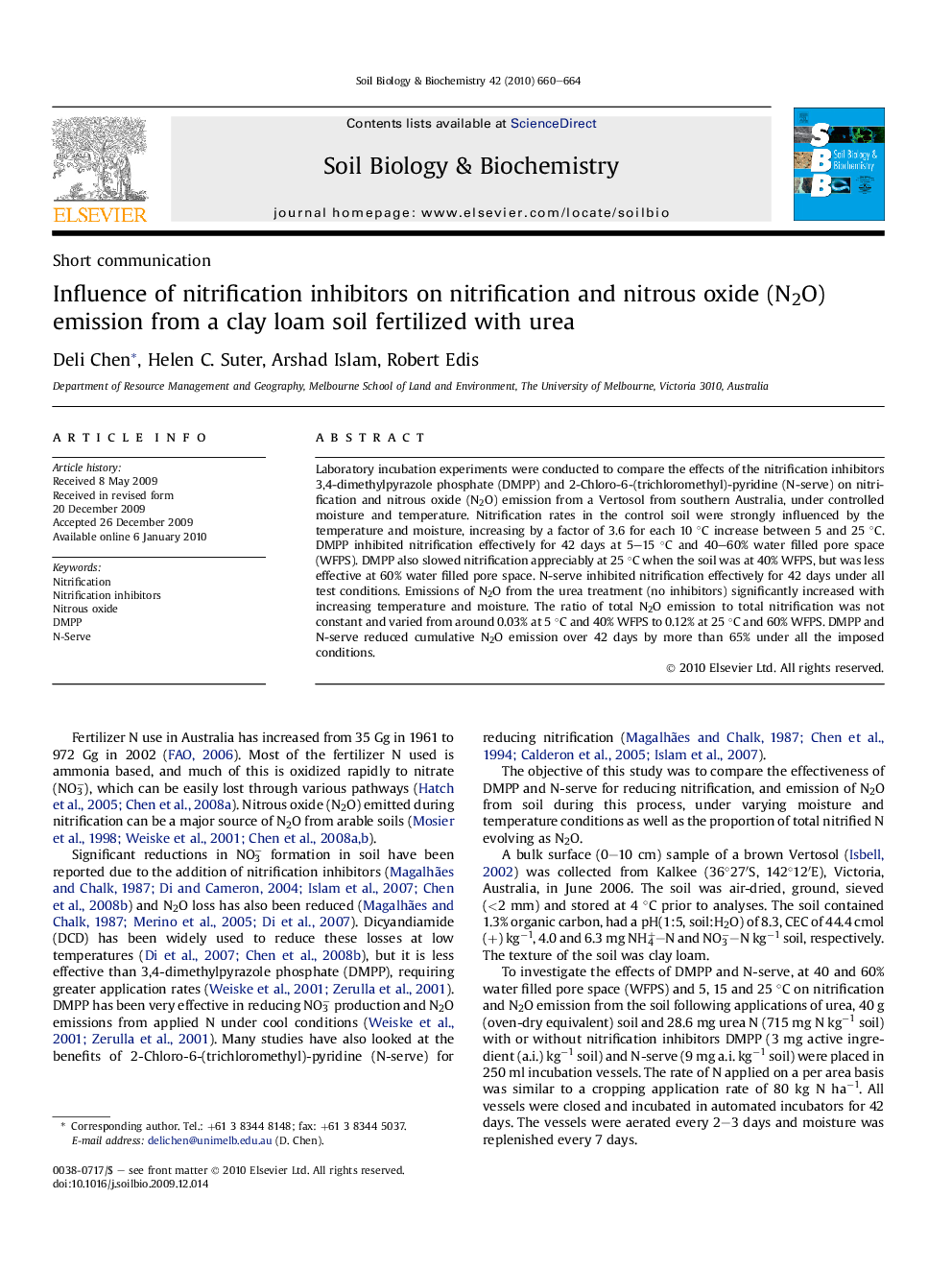| Article ID | Journal | Published Year | Pages | File Type |
|---|---|---|---|---|
| 2025066 | Soil Biology and Biochemistry | 2010 | 5 Pages |
Laboratory incubation experiments were conducted to compare the effects of the nitrification inhibitors 3,4-dimethylpyrazole phosphate (DMPP) and 2-Chloro-6-(trichloromethyl)-pyridine (N-serve) on nitrification and nitrous oxide (N2O) emission from a Vertosol from southern Australia, under controlled moisture and temperature. Nitrification rates in the control soil were strongly influenced by the temperature and moisture, increasing by a factor of 3.6 for each 10 °C increase between 5 and 25 °C. DMPP inhibited nitrification effectively for 42 days at 5–15 °C and 40–60% water filled pore space (WFPS). DMPP also slowed nitrification appreciably at 25 °C when the soil was at 40% WFPS, but was less effective at 60% water filled pore space. N-serve inhibited nitrification effectively for 42 days under all test conditions. Emissions of N2O from the urea treatment (no inhibitors) significantly increased with increasing temperature and moisture. The ratio of total N2O emission to total nitrification was not constant and varied from around 0.03% at 5 °C and 40% WFPS to 0.12% at 25 °C and 60% WFPS. DMPP and N-serve reduced cumulative N2O emission over 42 days by more than 65% under all the imposed conditions.
